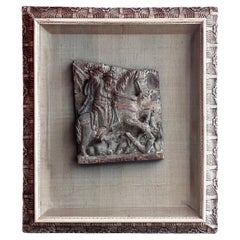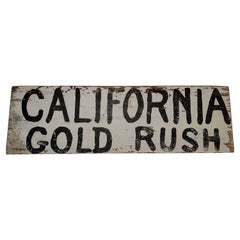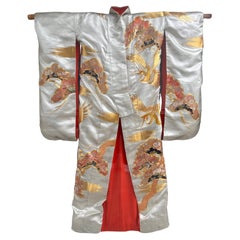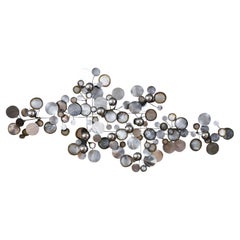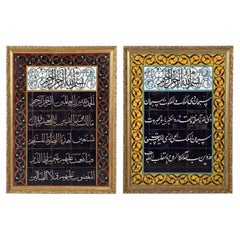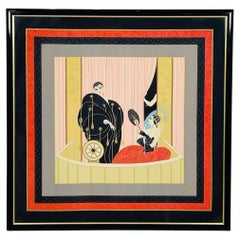Los Angeles - Decorative Art
19th Century Unknown Medieval Antique Los Angeles - Decorative Art
Linen, Wood
20th Century American Adirondack Los Angeles - Decorative Art
Wood, Paint
Mid-20th Century Japanese Chinoiserie Los Angeles - Decorative Art
Silk
1970s American Mid-Century Modern Vintage Los Angeles - Decorative Art
Chrome
20th Century Egyptian Islamic Los Angeles - Decorative Art
Ceramic
1980s French Art Deco Vintage Los Angeles - Decorative Art
Silk
1980s French Modern Vintage Los Angeles - Decorative Art
Paper
Mid-20th Century American Mid-Century Modern Los Angeles - Decorative Art
Brass
Late 20th Century American Adirondack Los Angeles - Decorative Art
Cowhide
19th Century French Rococo Revival Antique Los Angeles - Decorative Art
Canvas, Giltwood
1910s Italian Baroque Vintage Los Angeles - Decorative Art
Canvas, Giltwood
18th Century French Baroque Antique Los Angeles - Decorative Art
Wool, Silk
Mid-20th Century Japanese Art Deco Los Angeles - Decorative Art
Silk
1990s American Los Angeles - Decorative Art
Fabric
Late 19th Century Italian Baroque Antique Los Angeles - Decorative Art
Canvas, Giltwood
18th Century Italian Baroque Antique Los Angeles - Decorative Art
Canvas, Giltwood
Late 19th Century Russian Baroque Antique Los Angeles - Decorative Art
Gesso, Canvas, Giltwood, Paint
Late 19th Century German Rococo Revival Antique Los Angeles - Decorative Art
Canvas, Wood
19th Century German Neoclassical Revival Antique Los Angeles - Decorative Art
Giltwood, Canvas
17th Century French Baroque Antique Los Angeles - Decorative Art
Canvas, Giltwood
Early 1900s Italian Baroque Antique Los Angeles - Decorative Art
Canvas, Giltwood
Early 20th Century Swiss Islamic Los Angeles - Decorative Art
Giltwood, Canvas
1960s American Neoclassical Vintage Los Angeles - Decorative Art
Wood
Mid-20th Century Dutch Mid-Century Modern Los Angeles - Decorative Art
Ceramic
1960s Nigerian Mid-Century Modern Vintage Los Angeles - Decorative Art
Other
Late 19th Century German Baroque Antique Los Angeles - Decorative Art
Gesso, Canvas, Wood
19th Century Italian Renaissance Antique Los Angeles - Decorative Art
Wood, Paint
Mid-20th Century Dutch Bauhaus Los Angeles - Decorative Art
Enamel
Early 1900s Italian Baroque Antique Los Angeles - Decorative Art
Canvas, Giltwood
Mid-20th Century North American Los Angeles - Decorative Art
Maple, Paper
1960s American Mid-Century Modern Vintage Los Angeles - Decorative Art
Ceramic, Wood, Walnut
19th Century Italian Other Antique Los Angeles - Decorative Art
Gesso, Canvas, Wood
19th Century American Adirondack Antique Los Angeles - Decorative Art
Paper
Mid-20th Century Belle Époque Los Angeles - Decorative Art
Giltwood
Mid-20th Century German Brutalist Los Angeles - Decorative Art
Metal
Early 19th Century French Louis XV Antique Los Angeles - Decorative Art
Canvas, Giltwood
1910s French Art Deco Vintage Los Angeles - Decorative Art
Glass, Wood
20th Century American Adirondack Los Angeles - Decorative Art
Canvas, Paint
19th Century French Rococo Antique Los Angeles - Decorative Art
Masonite, Gesso, Canvas, Giltwood
18th Century Italian Renaissance Antique Los Angeles - Decorative Art
Wood
Mid-20th Century Mid-Century Modern Los Angeles - Decorative Art
Acrylic
1970s Spanish Modern Vintage Los Angeles - Decorative Art
Stainless Steel
1970s American Mid-Century Modern Vintage Los Angeles - Decorative Art
Brass
Early 20th Century Italian Neoclassical Los Angeles - Decorative Art
Precious Stone
1950s American Mid-Century Modern Vintage Los Angeles - Decorative Art
Concrete, Iron
20th Century French Art Deco Los Angeles - Decorative Art
Glass
Mid-20th Century English Other Los Angeles - Decorative Art
Canvas, Wood
Early 1700s Belgian Baroque Antique Los Angeles - Decorative Art
Wool
Early 20th Century German Greco Roman Los Angeles - Decorative Art
Canvas, Giltwood
Late 20th Century American Post-Modern Los Angeles - Decorative Art
Acrylic
19th Century French Louis XV Antique Los Angeles - Decorative Art
Gesso, Canvas, Wood
Mid-20th Century French Modern Los Angeles - Decorative Art
Metal
1980s Spanish Post-Modern Vintage Los Angeles - Decorative Art
Bronze
Late 19th Century French Romantic Antique Los Angeles - Decorative Art
Canvas, Wood, Plywood
Late 19th Century Italian Baroque Revival Antique Los Angeles - Decorative Art
Canvas, Wood
Early 20th Century Italian Rococo Los Angeles - Decorative Art
Canvas, Giltwood
2010s North American Bauhaus Los Angeles - Decorative Art
Walnut
Early 20th Century Neoclassical Los Angeles - Decorative Art
Gold Leaf
1940s American Art Deco Vintage Los Angeles - Decorative Art
Wood
Late 19th Century Austrian Belle Époque Antique Los Angeles - Decorative Art
Canvas, Giltwood
Read More
At Colonial Williamsburg, Everything Old Is New Again
With the help of a new director, the Virginia institution's folk art and decorative arts museums are undergoing extensive upgrades.
New York’s Hirschl & Adler Showcases the American Workmanship and Design Panache of Neoclassical Treasures
The gallery's latest exhibition proves that museum-quality pieces entice and inspire, whether in traditional or more modern interiors.
